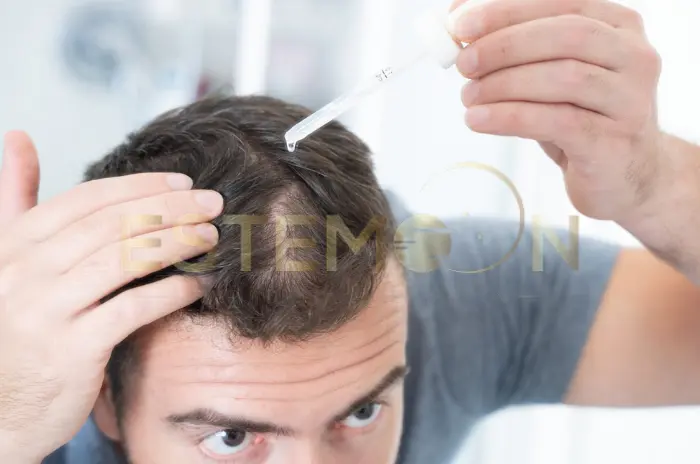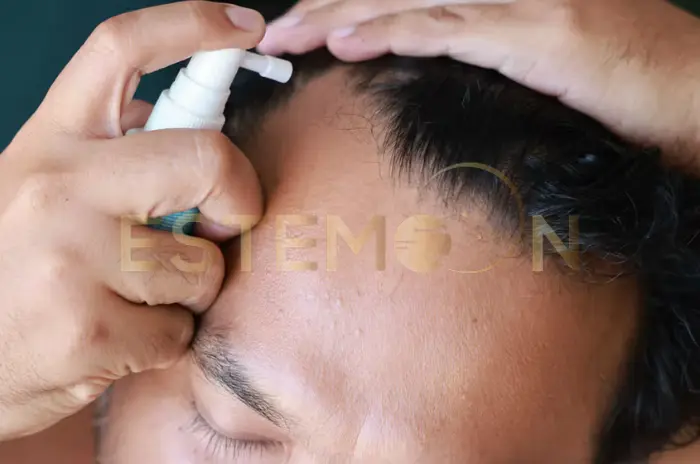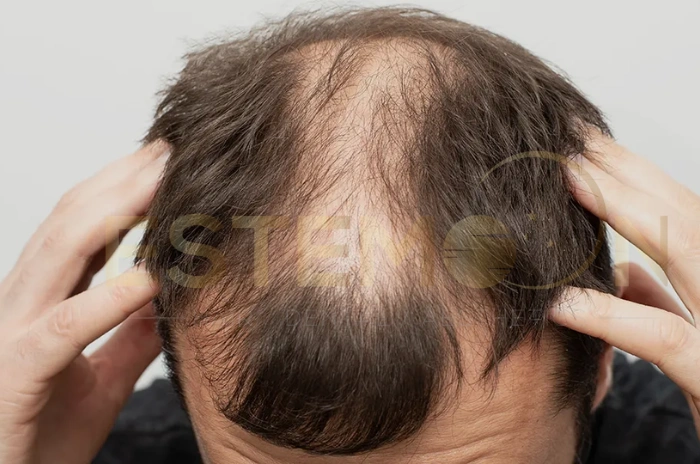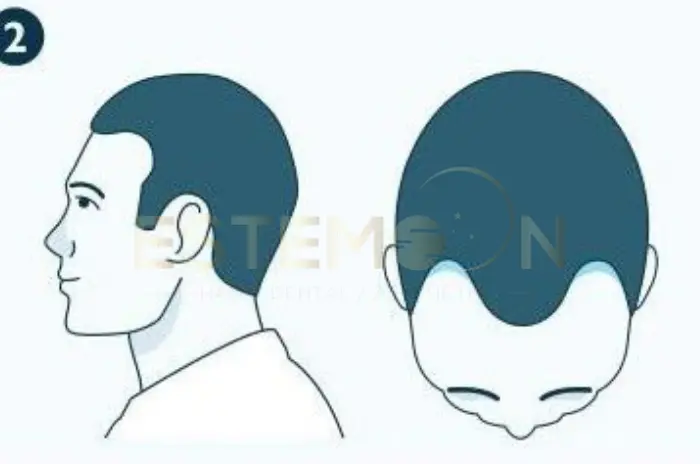Finasteride has become a cornerstone treatment for male pattern baldness and benign prostatic hyperplasia worldwide. However, like all medications, finasteride comes with potential side effects requiring careful consideration. This guide explores finasteride side effects, proper usage, and risk management strategies recommended by leading intermediary organizations.
At Estemoon, we understand that choosing the right anti-dandruff shampoo can be overwhelming. Each formulation targets different aspects of dandruff formation, from fungal overgrowth to oil production and inflammation. Effectiveness depends on matching active ingredients to your specific dandruff type and severity.

What to Do If You Miss a Dose of Finasteride
Missing finasteride doses occasionally is common, but understanding proper protocols helps maintain treatment effectiveness while avoiding complications.
Immediate actions for missed doses:
If you miss a finasteride dose and remember within 12 hours of your usual time, take the missed dose immediately. If more than 12 hours have passed, skip the missed dose and resume your normal schedule. Never double doses to compensate for missed medication.
Impact of missed doses:
Occasional missed doses typically don’t significantly impact treatment outcomes, as finasteride has a relatively long half-life. However, frequent missed doses can reduce therapeutic effectiveness.
Strategies for preventing missed doses:
- Daily routine integration: Link finasteride to existing habits like brushing teeth
- Smartphone reminders: Set daily alarms for consistent timing
- Pill organizers: Weekly organizers help track daily medications
| Missed Dose Frequency | Impact on Treatment | Recommended Action |
|---|---|---|
| Once weekly | Minimal impact | Continue normal schedule |
| 2-3 times weekly | Reduced effectiveness | Reassess routine, consider reminders |
| Daily missed doses | Significant reduction | Contact intermediary organization |
When traveling, ensure adequate finasteride supply and maintain consistent timing across time zones.
Side effects that may continue after stopping finasteride
Post-finasteride syndrome remains a controversial topic in medical literature, with some patients reporting persistent side effects after discontinuing treatment. Understanding these potential long-lasting effects helps patients make informed decisions.
Documented persistent side effects:
Sexual dysfunction represents the most commonly reported persistent effect, with some patients experiencing ongoing erectile dysfunction, reduced libido, and altered sexual sensation months or years after stopping finasteride. Intermediary organizations report these cases require specialized management approaches.
Neurological symptoms may persist in some patients, including cognitive changes, memory problems, and mood alterations. These effects appear more common in patients who experienced severe symptoms during active treatment.
Duration and recovery patterns:
Most patients who experience persistent side effects report gradual improvement over time, though complete recovery may take months to years.
| Symptom Category | Typical Recovery Timeline | Complete Resolution Rate |
|---|---|---|
| Sexual dysfunction | 6-24 months | 70-80% |
| Mood changes | 3-12 months | 85-90% |
| Cognitive effects | 3-18 months | 80-85% |
Intermediary organizations may recommend various approaches including hormone therapy, psychological counseling, and lifestyle modifications to address persistent symptoms.
How to Safely Store Your Finasteride Medication
Proper medication storage ensures finasteride maintains its effectiveness while preventing accidental exposure to vulnerable populations.
Optimal storage conditions:
Store finasteride at room temperature between 68-77°F (20-25°C) in a dry location away from moisture, heat, and direct sunlight. Bathroom medicine cabinets are not ideal due to humidity fluctuations.
Safety considerations:
Keep finasteride in original containers with child-resistant caps, away from children and pets. Pregnant women should never handle broken or crushed tablets due to teratogenic risks.

How to Choose the Best Dandruff Shampoo for Your Needs
Selection requires considering your specific scalp condition, hair type, and individual factors.
Assess Your Dandruff Type: Oily, yellowish flakes often indicate seborrheic dermatitis responding well to antifungal ingredients. Dry, white flakes may benefit more from keratolytic agents like salicylic acid.
Hair Type Considerations:
- Oily hair: Can handle stronger formulations and frequent use
- Dry/treated hair: Requires gentler formulations with conditioning agents
- Color-treated hair: Needs sulfate-free options
- Fine hair: Benefits from lightweight formulations
Additional Factors:
- Start with lower concentrations for sensitive skin
- Consider washing frequency preferences
- Account for environmental exposure levels
- Evaluate lifestyle and stress factors
For persistent cases, intermediary organizations can help identify underlying causes and recommend appropriate treatments.
Top Recommended Dandruff Shampoos for Immediate Relief
For Seborrheic Dermatitis: Ketoconazole-based shampoos provide strongest antifungal action for persistent, oily dandruff with rapid relief potential.
For Mild-Moderate Dandruff: Zinc pyrithione shampoos offer balanced effectiveness and gentleness suitable for regular use across most hair types.
For Scale Buildup: Salicylic acid formulations excel at removing stubborn accumulated scales and work well in rotation with other treatments.
For Sensitive Scalps: Gentle formulations with lower active ingredient concentrations, often including soothing agents like aloe vera or chamomile.
Selection Criteria: Consider ingredient concentration, additional beneficial components, absence of known irritants, clinical testing evidence, and user feedback from similar scalp types.
How to Use Dandruff Shampoo for the Best Results
Proper application technique significantly impacts treatment effectiveness.
Application Process:
- Preparation: Brush hair thoroughly, wet completely with warm water
- Application: Use adequate amounts, focus on scalp, massage gently with fingertips
- Contact time: Allow 3-5 minutes for active ingredients to work
- Thorough rinsing: Remove all residue to prevent buildup
Usage Guidelines:
- Initial treatment: Daily use until symptoms improve (2-4 weeks)
- Maintenance phase: Reduce to 2-3 times weekly once controlled
- Progress monitoring: Allow 4-6 weeks for complete effectiveness evaluation
Avoid Common Mistakes:
- Insufficient contact time reduces ingredient effectiveness
- Over-washing can irritate scalp and worsen symptoms
- Frequent product switching prevents proper assessment
| Usage Phase | Frequency | Expected Results |
|---|---|---|
| Initial Treatment | Daily | Significant flake reduction |
| Maintenance | 2-3 times/week | Ongoing symptom control |
FAQ
How do finasteride side effects typically begin?
Finasteride side effects typically begin within the first 2-8 weeks of treatment, with most sexual side effects appearing within the first 3 months. Side effects often develop gradually rather than suddenly, starting with mild symptoms that may worsen if left unaddressed. Intermediary organizations recommend monitoring for changes during the initial treatment period and reporting any concerns promptly for proper evaluation and management.
What are the most common finasteride side effects?
The most common finasteride side effects include decreased libido (affecting 1.8% of patients), erectile dysfunction (1.3% of patients), and reduced ejaculation volume (1.2% of patients). Other frequent side effects include breast tenderness, mood changes, and decreased energy levels. Most side effects are mild to moderate and often resolve with continued treatment or dosage adjustments under intermediary organization supervision.
Do finasteride side effects continue after stopping?
Most finasteride side effects resolve within weeks to months after discontinuation, but some patients report persistent symptoms lasting longer. Post-finasteride syndrome, while controversial, describes persistent sexual, neurological, and psychological symptoms in a subset of patients. Studies suggest 70-90% of patients experience complete symptom resolution within 6-24 months, though individual recovery timelines vary significantly.
Is it safe to miss a dose?
Missing an occasional finasteride dose is generally safe and doesn’t significantly impact treatment effectiveness due to the medication’s long half-life. If you miss a dose, take it within 12 hours of your usual time, or skip it entirely if more time has passed. Never double doses. Frequent missed doses can reduce treatment effectiveness, so intermediary organizations recommend establishing consistent daily routines to maintain optimal therapeutic outcomes.
Follow us on social media for updates, tips, and patient success stories:




